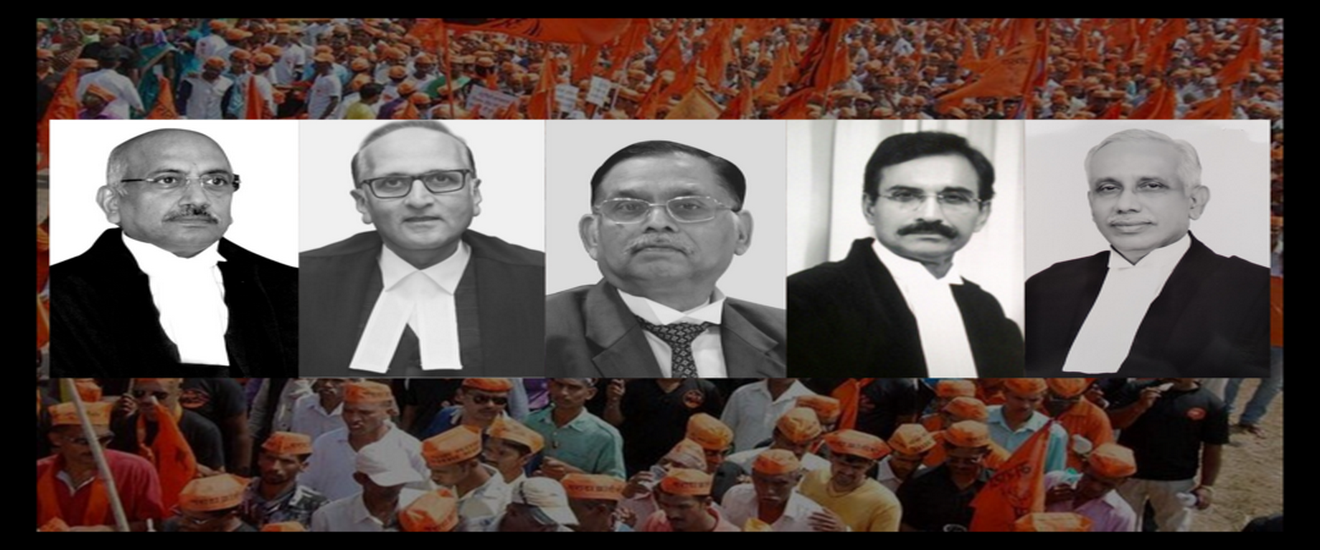Analysis
Breaking Down the Three Opinions of the Maratha Judgment: Length, Structure & Style
Bhushan J interpreted the 102nd Constitution Amendment Act purposively whereas Bhat J interpreted the Amendment strictly based on its text.

On May 5th 2021, the Supreme Court’s five-judge Constitution Bench read down the Socially and Educationally Backward Classes Act, 2018 providing for Maratha reservations. Four opinions were delivered. Of these Justice Hemant Gupta’s is the shortest at two paragraphs over a single page. It only expresses agreement with the other unanimous opinions on the 50% ceiling limit on reservation. And agrees with Bhat J and Rao Jon the interpretation of the 102nd Constitution Amendment Act, 2018.
Below, we compare the style and structure of the other three opinions by Justices Ashok Bhushan (for himself and Nazeer J), Nageswara Rao and Ravindra Bhat.
Length and Scope
Bhushan J wrote the longest opinion at 446 paragraphs over 408 pages. It has an approximate word count of 74,000. However, it is also the only opinion that deals with all issues in full.
Rao J expresses agreement with J Bhushan on the 50% limit and Bhat J on the 102nd Amendment. His opinion runs to 26 paragraphs over 22 pages, with approximately 4,500 words including footnotes. He has provided additional reasoning only on the interpretation of the 102nd amendment, specifically with reference to the use of ‘external aids’ to interpretation.
Bhat J’s opinion is the second longest at 189 paragraphs over 131 pages. It has an approximate word count of 45,000 including footnotes. His opinion addresses all issues except whether the Gaikwad Commission had provided a justification to breach the 50% limit on reservations.
Both Bhushan and Bhat JJ looked at methods of interpretation. And put forth differing views on the extent to which purposive interpretation and external aids could be used. However, Bhat J also went further and looked at the connection between definition clauses and its effect on interpretation. No other opinion dealt with law on this matter.
Citation
Though his opinion was short, Nageswara Rao Jhas cited 42 cases, 3 books and 2 articles.
Bhushan J’s opinion has extensive citation of case law, legislation and parliamentary records. His is the only opinion which contains citations inline. So, while we were unable to determine the exact number of cases, he refers only to 2 academic sources in his opinion: one book on purposive interpretation and Black’s legal dictionary.
Bhat J has cited 76 cases, 4 books and 7 articles. He has also drawn on 13 sources for Government statistics.
Passing Remarks
Bhat J has written 19 pages on a framework of affirmative action that went beyond the reservation issue. He looks at comparative frameworks of affirmative action and statistics of various schemes already implemented. He also makes some recommendations. This is a significant portion of ‘obiter dicta’, or passing remarks that are not binding or operative. Bhushan J’s opinion also contains similar remarks recommending alternative means of affirmative action, but only for one paragraph [¶ 170].
Structure and Style
Bhushan J laid out the six questions framed by the Bench at the beginning of his judgment. However, he chose a different 16-part structure to answer those questions. One of these parts noted the submissions of parties on all issues together. J Bhat used the 6 questions as the basis of his structure. He took note of parties’ submissions and addressed them within his analysis.
Bhushan and Rao JJ’s judgments relied primarily on legal vocabulary. Bhat J was the only one who included a literary allusion: to Rabindranath Tagore’s ‘Where the Mind is Without Fear’. He also quoted Franklin Roosevelt. While Bhushan J termed the 50% limit a ‘reasonable balance’ under the language of Article 14 jurisprudence, Bhat J adopted the phrase ‘Goldilocks solution’, referring to the popular Western fairy tale.
